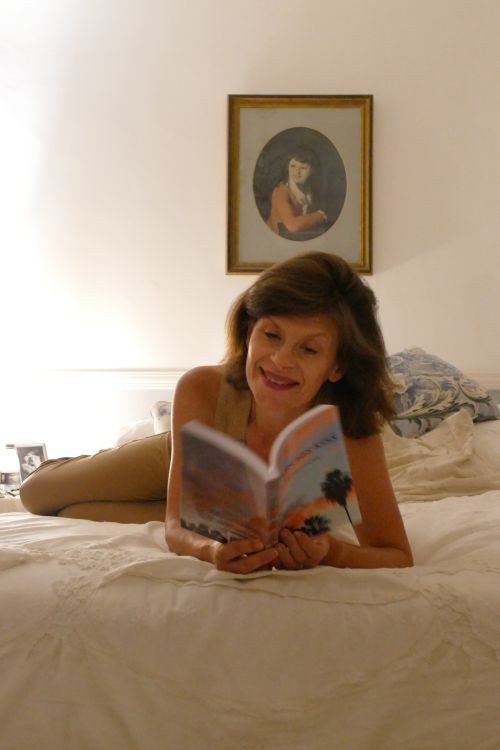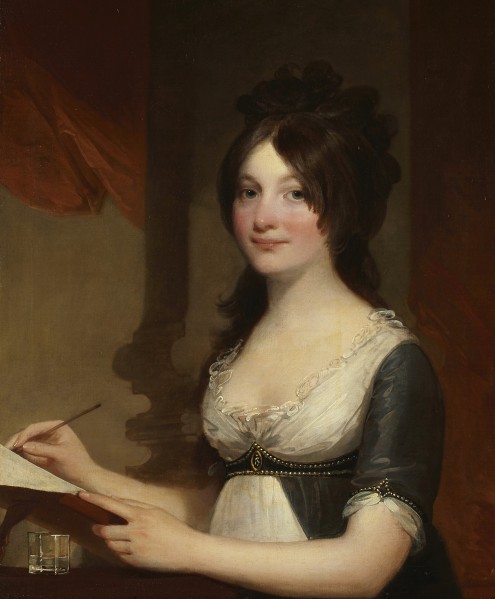 The Beguiling of Merlin by Edward Burne Jones, 1874. Oil on canvas. Image source: Wikipedia
The Beguiling of Merlin by Edward Burne Jones, 1874. Oil on canvas. Image source: Wikipedia
“You couldn’t even get my name right”, explained the Lady of the Lake to Merlin, as she started reading the audio version of his own spellbook to put him to sleep, imprisoned in a hawthorn tree, for eternity.
Who is the witch who binds us with other people’s stories? She, or he, beguiles us with their voice, conjuring characters, passions and landscapes as vividly as CGI while they read novels and manuals aloud. Try selling that to the teenager, or spouse, playing GTAV in the room next door.
The storyspelling power belongs to actors when they narrate audiobooks. Does it always work? Probably not. I turn off BBC Radio 4’s Book at Bedtime as a barrier between me and imagination, and, sometimes, sanity.
Once upon a time there were a couple of actors whom I loved who enchanted me when they read to me in bed at night. That was long ago.
I loathe narration in movies, which, except when used ironically or to heighten emotional effect (Sunset Boulevard?) mitigates experience by explaining information to audiences which they or the film-makers are too stupid to share through images and dialogue.
It’s reassuring for me that Harrison Ford objected to the voice-over imposed by the studio on Blade Runner. As he said, “it was simply bad narration”.
But – “but” being the most important word in peaceful communication and the most laborious in fiction – there are other testimonies. When the spell works, you are transported to other worlds through your headphones:
– Without fail, the time I spent in your storyspell upgraded the quality of my day. – A. A. Attanasio, author of The Dragon and the Unicorn, describing listening to the audio version of his novel.
Is the audiobook merely a modern convenience for assimilating information already available in print, or can it enhance the listener’s imaginative experience in a sensory way? Whose voice or voices do we hear when we read to ourselves?
– I got to looking forward to the next installment, for the aesthetic rush of your performance that invariably left me feeling uplifted, strengthened. Somehow – magically! – your artistic élan brightened my own mundane history. That’s the authentic power of art! Thank you for bringing that power to my novel. – A. A. Attanasio
Do we prefer the voices in our own heads, or the insistent voice of the witch trying to enthrall us?
– I am mesmerized by the voice you have given this novel. –
The siren’s magic works for some aurally sensitive people – but not for all of us, fed up of other people’s intrusive voice-overs when what we really want is to live in the moment ourselves. Do I really find the witch’s voice more enchanting than imaginary ones?
Can the witchiest of readers transport me away from my everyday dullness and anxieties to take part in “a life larger than the sentence?” (A. A. Attanasio again – he’s got a way of putting awesome concepts into words.)
Am I promoting an audiobook, or sabotaging it?
Am I for the witch, or against her?
Consider Merlin – a genius, a philosopher, a sage with superpowers who could see into the future. Look at him, in your mind’s eye or in Burne Jones’ painting, voluntarily surrendering to the nymph Nimue/Vivien/Ninianne – hardly anyone in Arthurian legend knows for certain what they want to be called or spelled, as if they are resigned to their symbolic significance being more important than their individuality – whom he had foreseen would enchant him into eternal sleep by turning one of his own spells against him.
In the end, people gave up calling her by a name: we know her as the Lady of the Lake. He could have avoided her; he could have carried on reading the print edition of his spellbook to himself, as he had done for hundreds of prosaic years, but instead he gave himself up to the voluptuous blossoms and pleasurably piercing thorns of enchantment by choosing the audio version.
– Words – those impish logoi – only carry the human spirit so far … and then not always where the writer intends; so, [the actor’s] narrative power, [their] skillful communion with those words, makes them live a life larger than the sentence. – A. A. Attanasio.
The Dragon and the Unicorn: The Perilous Order of Camelot (Volume 1) by A.A. Attanasio is now available as an audiobook on Audible, Amazon and iTunes. The author blends Arthurian myths and legends with philosophy, history, theology and science fiction. At the heart of the book is the story of Ygrane, who triumphs over adversity in multiple roles, as maiden-sacrifice, witch-queen, wife and mother, whose emotional life seems so vividly real to readers that she rises out of fantasy as a real woman, a once and future heroine.
– I feel privileged that my text now wholly partakes of the larger life of performance art through your talent.–
A.A. Attanasio writing about the audio version of his monumental novel, read by Pippa Rathborne, on sale at Audible, Amazon and iTunes.




 Edmund Leighton: On the Threshold (1900). Manchester Art Gallery. Image source: Wikipedia
Edmund Leighton: On the Threshold (1900). Manchester Art Gallery. Image source: Wikipedia

 The Beguiling of Merlin by Edward Burne Jones, 1874. Oil on canvas. Image source: Wikipedia
The Beguiling of Merlin by Edward Burne Jones, 1874. Oil on canvas. Image source: Wikipedia
